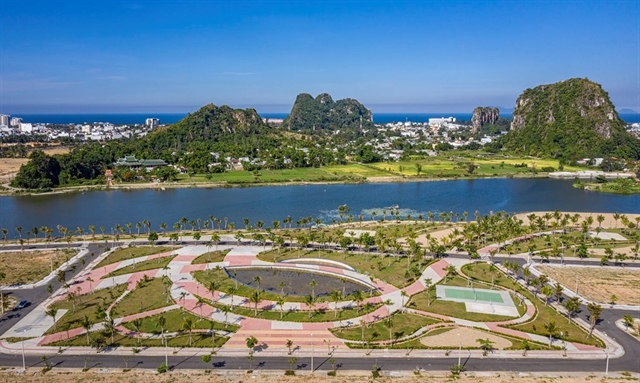 Economy
Economy

 |
| A newly-developed urban centre in the central city of Đà Nẵng. The coastal town continued to top the country's PSDI this year. VNA/VNS Photo |
HÀ NỘI — The Academy of Policy and Development (APD), under the Ministry of Planning and Investment (MPI) released the 2021 Provincial Sustainable Development Index (PSDI) for cities and provinces across the country on Wednesday, as well as a number of recommendations to help them stay on-course in the coming years.
The country's average PSDI for the year 2021 was 51.38 points, a reflection of a difficult year when localities struggled to deal with a global pandemic and post-pandemic social and economic recovery.
The academy urged local governments to step up efforts in the implementation of the country's 2030 vision for sustainable development.
The central city of Đà Nẵng continued to top the index this time with 65.28 points, followed by northern port city Hải Phòng with 64.09 and Quảng Ninh, another northern coastal town, with 63.10 points.
The capital city Hà Nội with 62.46 and emerging northern industrial hub Hưng Yên Province with 62.43 points showed some remarkable improvement compared to the 2020's index.
The vast majority of bottom-ranking localities were located in remote and isolated regions of the country, which trailed far behind in development in comparison to the country's large urban centres in the Red River Delta and the Mekong Delta.
Hà Nam Province and Bình Dương Province were other up-and-comers this year thanks to multiple large industrial investments.
At an event announcing the 2021 index, policymakers, economists and scientists discussed measures to help the country stay on course with its sustainable development goals (SDGs), as well as to review the implementation of SDGs on both central and local government levels.
A total of 17 SDGs have been included in a National Action Plan until 2030 which translated into 115 objectives that are suitable to Việt Nam's historic, geographic and demographic conditions.
Development experts said the implementation of the SDGs has played a key part in setting up the foundation for the country's next phase of development.
Dr Trần Trọng Nguyên, APD's director, however, said there is a need to build a more detailed plan for SDGs implementation at the local government level, which integrates SDGs into local socio-economic long-term development strategy.
An important milestone has been reached in the country's effort to eliminate multidimensional poverty, from 9.2 per cent in 2016 to 3.36 per cent in 2022.
''Some of our key objectives are to eliminate hunger, ensure food security, bolster exports, especially of agroforestry products and develop a sustainable agriculture sector," said economist Lê Việt Anh.
Other important objectives include improvements to gender quality, public services and the fight against violence against children. VNS




